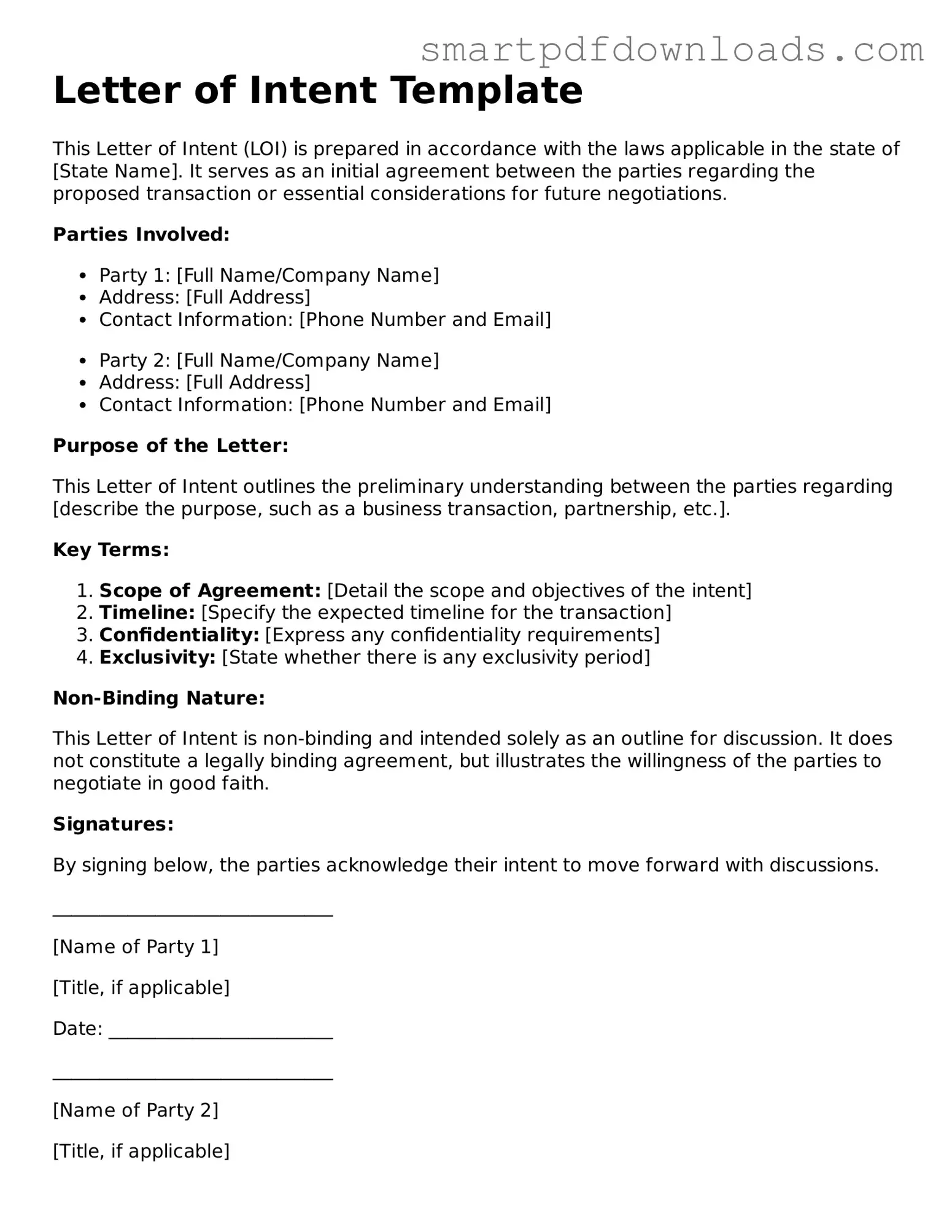Letter of Intent Template
This Letter of Intent (LOI) is prepared in accordance with the laws applicable in the state of [State Name]. It serves as an initial agreement between the parties regarding the proposed transaction or essential considerations for future negotiations.
Parties Involved:
- Party 1: [Full Name/Company Name]
- Address: [Full Address]
- Contact Information: [Phone Number and Email]
- Party 2: [Full Name/Company Name]
- Address: [Full Address]
- Contact Information: [Phone Number and Email]
Purpose of the Letter:
This Letter of Intent outlines the preliminary understanding between the parties regarding [describe the purpose, such as a business transaction, partnership, etc.].
Key Terms:
- Scope of Agreement: [Detail the scope and objectives of the intent]
- Timeline: [Specify the expected timeline for the transaction]
- Confidentiality: [Express any confidentiality requirements]
- Exclusivity: [State whether there is any exclusivity period]
Non-Binding Nature:
This Letter of Intent is non-binding and intended solely as an outline for discussion. It does not constitute a legally binding agreement, but illustrates the willingness of the parties to negotiate in good faith.
Signatures:
By signing below, the parties acknowledge their intent to move forward with discussions.
______________________________
[Name of Party 1]
[Title, if applicable]
Date: ________________________
______________________________
[Name of Party 2]
[Title, if applicable]
Date: ________________________
